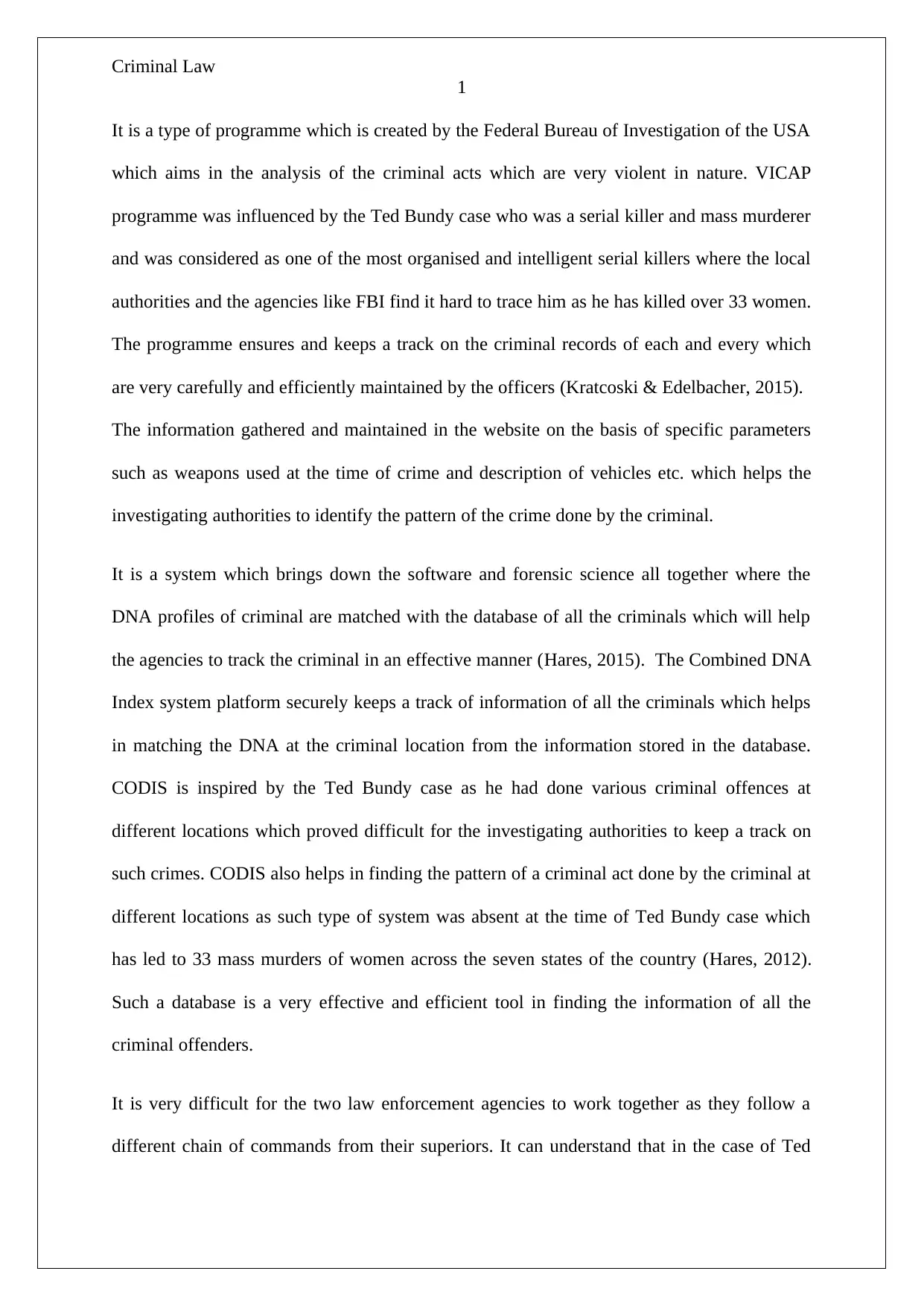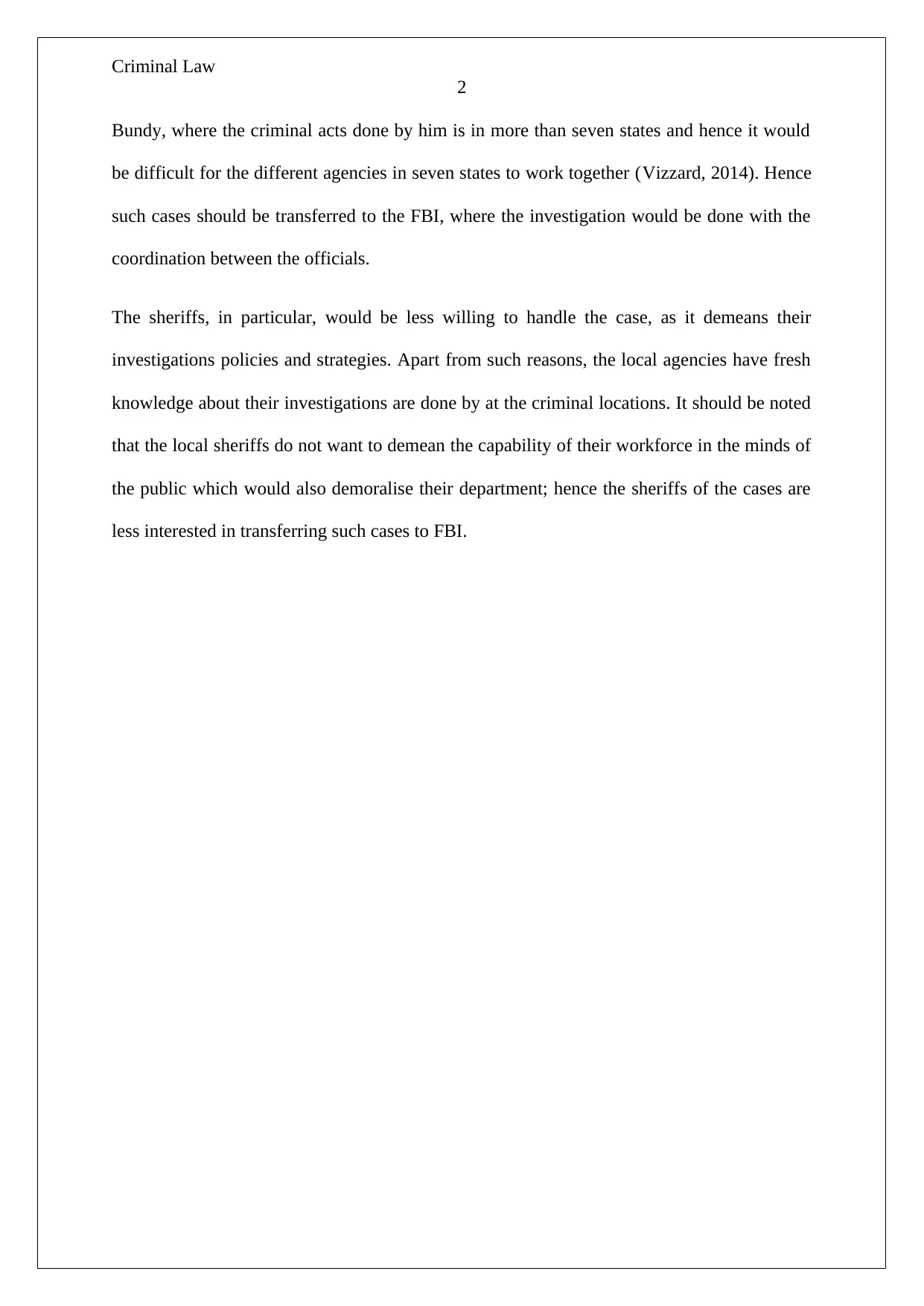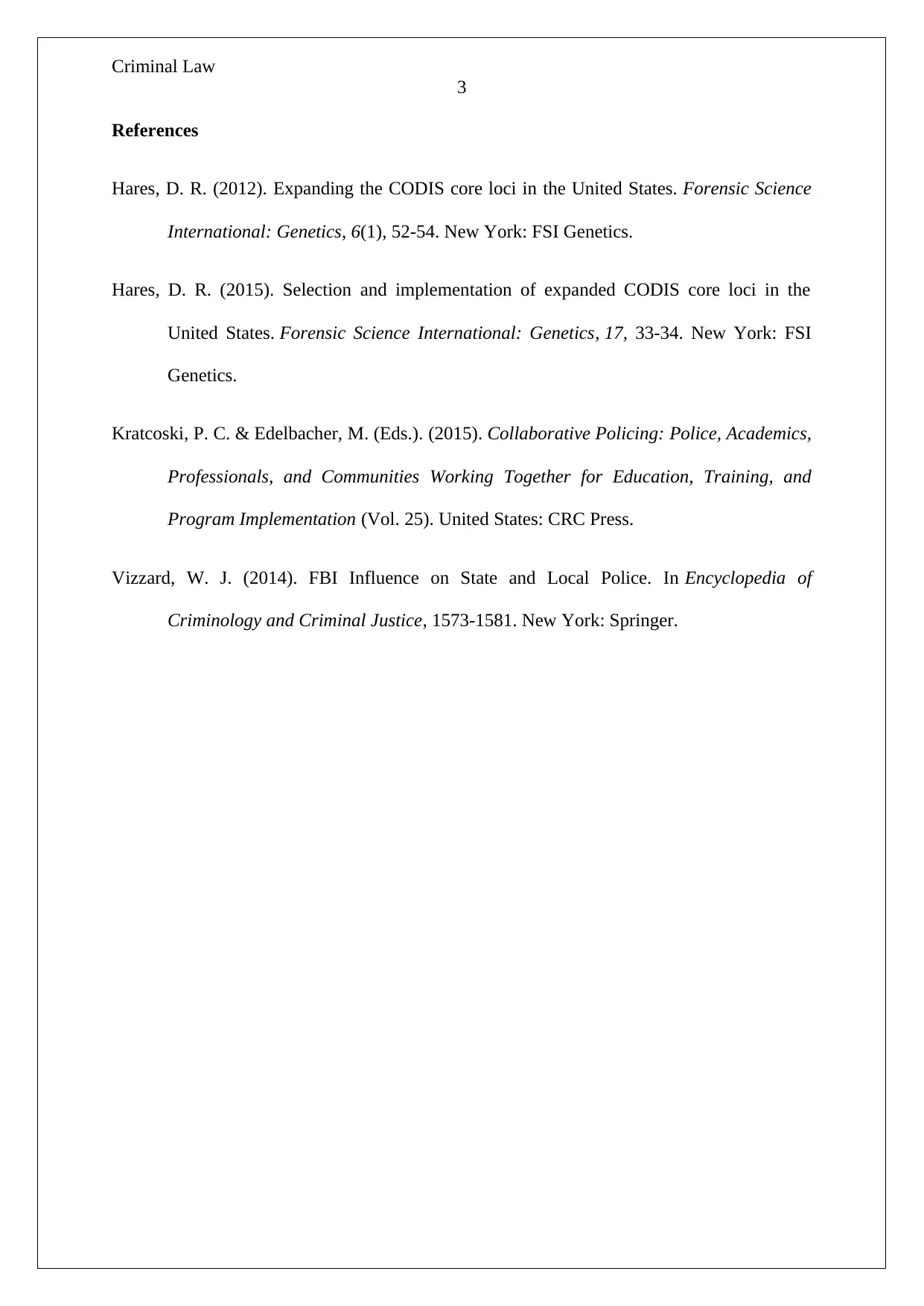Analyzing ViCAP and CODIS: Enhancing Serial Killer Investigations
VerifiedAdded on 2023/04/25
|4
|722
|354
Discussion Board Post
AI Summary
This discussion post analyzes the ViCAP (Violent Criminal Apprehension Program) and CODIS (Combined DNA Index System) programs, which were developed in response to the challenges posed by serial killer cases, particularly the Ted Bundy case. ViCAP, created by the FBI, aims to analyze violent criminal acts by tracking criminal records and identifying patterns based on specific parameters like weapons and vehicle descriptions. CODIS uses DNA profiles to match criminals to crime scenes. The post also discusses the difficulties in inter-agency cooperation during serial killer investigations, highlighting the reluctance of local law enforcement, such as sheriffs, to relinquish control to the FBI due to concerns about undermining their authority and expertise. The discussion emphasizes the importance of these systems in modern law enforcement for effectively tracking and apprehending serial offenders.
1 out of 4






![[object Object]](/_next/static/media/star-bottom.7253800d.svg)